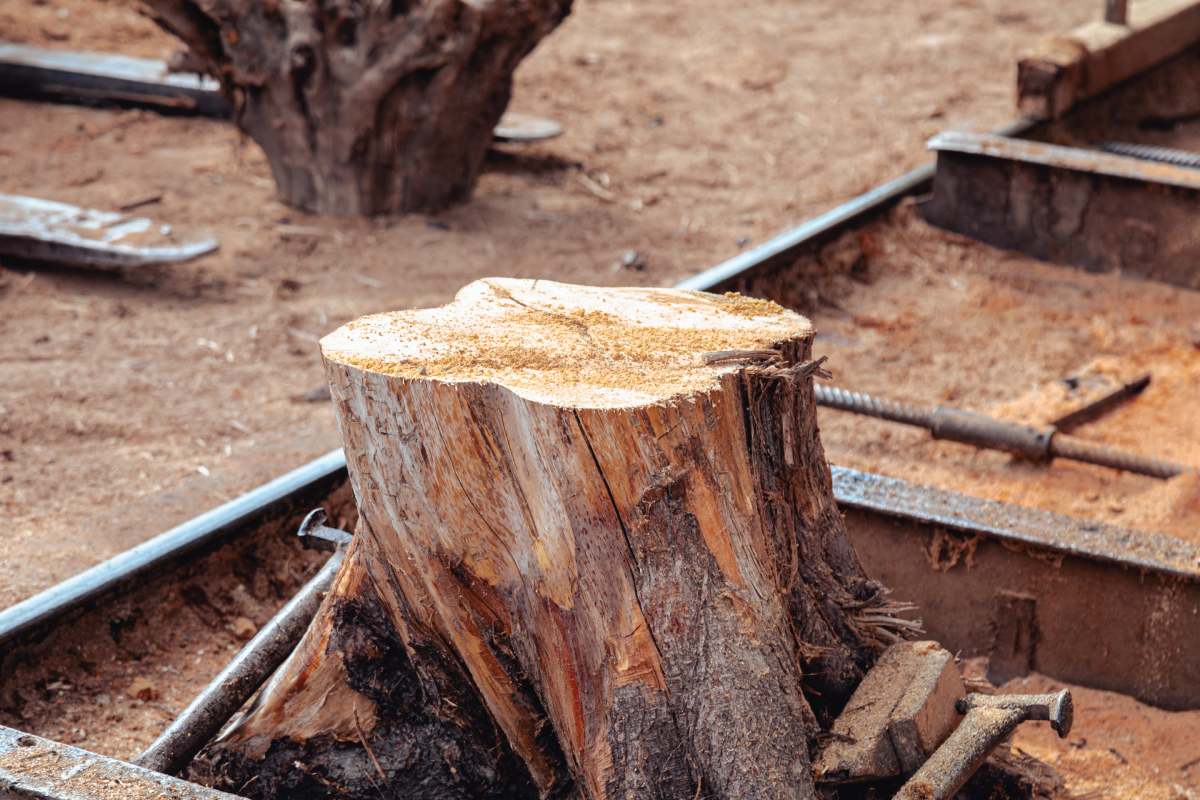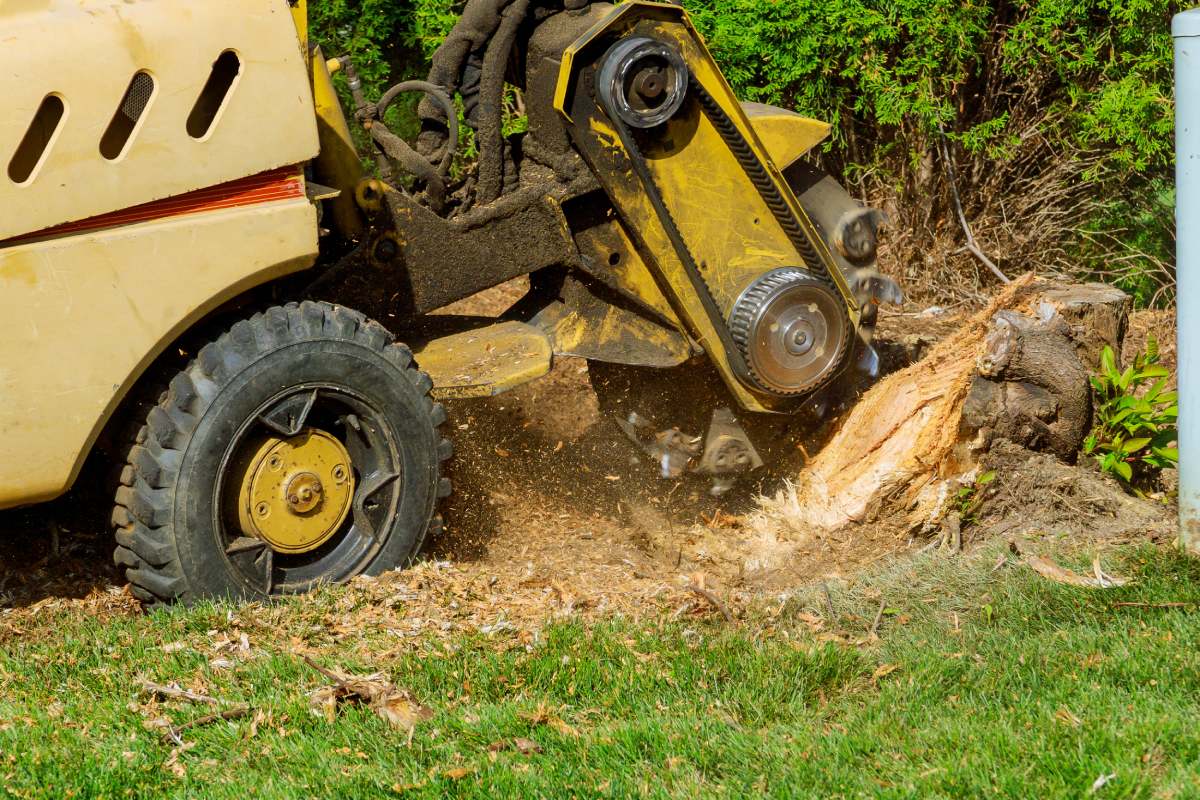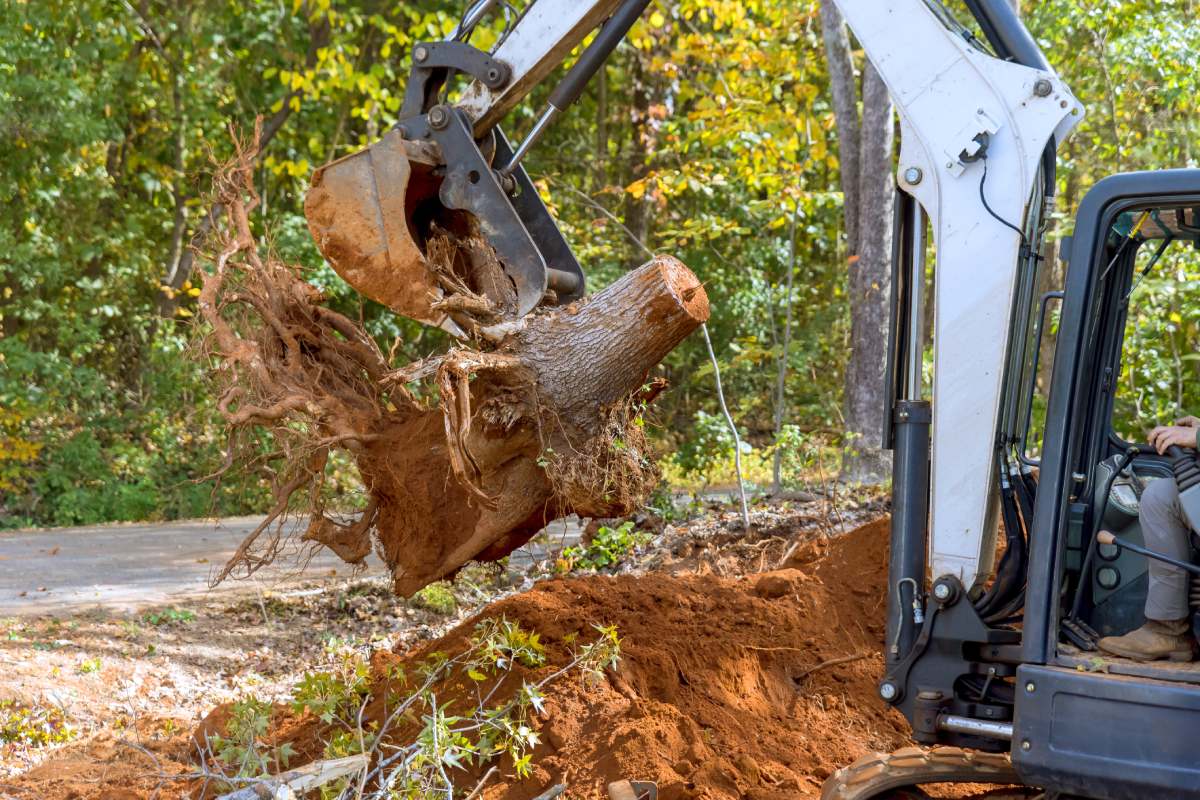
Stump Grinding vs Removal: Which One is Better?
What is stump removal? What is stump grinding? Which one is better, grinding or removing? Read this to find out
Stumps, the silent sentinels of felled trees, often linger long after the tree has been removed, posing both practical and aesthetic challenges for property owners. Thankfully, there are two primary methods for dealing with these stubborn remnants: stump grinding and stump removal.
Each method offers its own set of advantages and considerations, allowing property owners to tailor their approach to suit their specific needs and circumstances. In this article, we’ll explore the intricacies of both stump grinding and stump removal, providing insight into which method may be the better choice for various situations.
What is Stump Grinding?

The stump grinding process begins with the positioning of the stump grinder near the stump that needs to be removed. The grinder is then started, and the rotating cutting wheel is lowered onto the stump. As the cutting wheel spins, it grinds away the stump bit by bit, turning it into small wood chips or mulch.
One of the main benefits of stump grinding is that it completely removes the stump from the ground, including the root system. This is important because leftover tree stumps can become eyesores in your yard, as well as potential hazards. They can also attract pests like termites and ants, and they can make it difficult to mow the lawn or plant new trees and flowers.
Stump grinding is also much faster than other stump removal methods, such as digging or using chemicals. With stump grinding, most stumps can be removed in just a matter of hours, depending on their size and location. This means you can quickly reclaim your yard and move on to other landscaping projects.
Additionally, stump grinding is relatively environmentally friendly compared to other methods. Instead of leaving behind chemicals or creating a large hole in your yard, stump grinding produces mulch that can be used to enrich your soil or as landscaping material. This helps to minimize waste and reduce the environmental impact of removing a tree stump.
When hiring a professional stump grinding service, it’s important to choose a reputable company with experience in tree removal and stump grinding like Lakeside Trees and Stumps. They have the necessary equipment and expertise to safely and effectively remove the stump without causing damage to your property. You should also inquire about the cost of the service and whether they offer any additional services, such as debris removal or soil restoration.
What is Stump Removal?

There are several methods used for stump removal, including:
- Excavation: This method involves digging around the stump to expose its roots, then using equipment such as a backhoe or excavator to pull the stump and its roots out of the ground. Excavation is effective for larger stumps and those with extensive root systems, but it can be labour-intensive and may cause damage to surrounding landscaping.
- Chemical Removal: Chemical stump removers are available that speed up the decomposition of the stump. These products are applied to the stump and work overtime to soften the wood, making it easier to break apart and remove. While chemical removal is relatively simple, it can take several weeks or months to fully eliminate the stump, and there may be environmental considerations with some chemicals.
- Burning: Burning is another method used to remove stumps, particularly for smaller stumps or those in remote locations. This involves igniting the stump and allowing it to burn down to ash. While burning can be effective, it may not be suitable for all situations, such as in urban areas where open fires are prohibited.
- Manual Removal: For smaller stumps, manual removal methods such as digging, chopping, or pulling may be sufficient. This typically involves using hand tools such as axes, shovels, and chains to break apart the stump and remove it piece by piece. While manual removal can be labour-intensive, it is often the most cost-effective option for smaller stumps.
Regardless of the method used, stump removal is an important step in landscaping and property maintenance. Leaving stumps in the ground can not only be unsightly but can also pose safety hazards, attract pests, and inhibit the growth of new vegetation. By fully removing stumps from the ground, property owners can reclaim valuable space and create a safer, more aesthetically pleasing environment.
Stump removal is the process of extracting the entire stump of a tree from the ground after it has been cut down. There are several methods used for stump removal, including excavation, chemical removal, burning, and manual removal. Each method has its own advantages and considerations, and the best approach will depend on factors such as the size and location of the stump, as well as the preferences of the property owner. Regardless of the method used, stump removal is an important step in maintaining a clean, safe, and attractive outdoor space.

Which One is Better, Grinding or Removing?
The choice between stump grinding and stump removal depends on various factors, including your preferences, budget, and specific circumstances. Each method has its advantages and considerations, so let’s compare them to help you decide which is better suited for your needs:
Stump Grinding
- Advantages:
- Faster: Stump grinding is generally faster than stump removal, often taking just a few hours to complete.
- Less Invasive: Stump grinding typically involves less disruption to surrounding landscaping since it doesn’t require digging up the entire stump and root system.
- Cost-Effective: In many cases, stump grinding is more cost-effective than stump removal, making it a budget-friendly option.
- Considerations:
- Partial Removal: Stump grinding leaves the roots of the tree in the ground, which means there may still be some potential for new growth or regrowth from the remaining roots.
- Mulch Residue: After stump grinding, you’re left with wood chips or mulch, which may need to be cleared away or repurposed.
Stump Removal
- Advantages:
- Complete Elimination: Stump removal completely eliminates the stump and its root system from the ground, ensuring that there is no potential for regrowth.
- Aesthetically Pleasing: Since the entire stump is removed, there’s no leftover mulch or wood chips, resulting in a cleaner and more aesthetically pleasing landscape.
- Prevents Regrowth: Without the root system, there’s no chance for the tree to regrow, eliminating any potential future issues with sprouting.
- Considerations:
- More Labor-Intensive: Stump removal often requires more labour and equipment, especially for larger stumps or those with extensive root systems.
- Higher Cost: Stump removal can be more expensive than stump grinding due to the additional labour and equipment required.
Ultimately, the decision between stump grinding and stump removal depends on your priorities and the specific circumstances of the stump you need to deal with. If you’re looking for a fast and cost-effective solution that doesn’t require complete removal, stump grinding may be the better option.
However, if you want to ensure complete elimination of the stump and prevent any potential for regrowth, stump removal may be the preferred choice despite the higher cost and more labour-intensive process. It’s always a good idea to consult with a professional tree service to assess your situation and provide recommendations based on your needs.
Conclusion
When it comes to getting rid of unsightly stumps, you’ve got two main options: stump grinding or stump removal. Each has its own benefits and things to consider. Your decision might hinge on how fast you want it done, how much you’re willing to spend, and what you’re dealing with stump-wise.
But no matter which route you take, the end goal is the same: to clear out those tree leftovers and make way for a fresh, beautiful yard. So whether you’re grinding them down or hauling them out, rest easy knowing that you’re on your way to a stump-free space where new life can spring up.